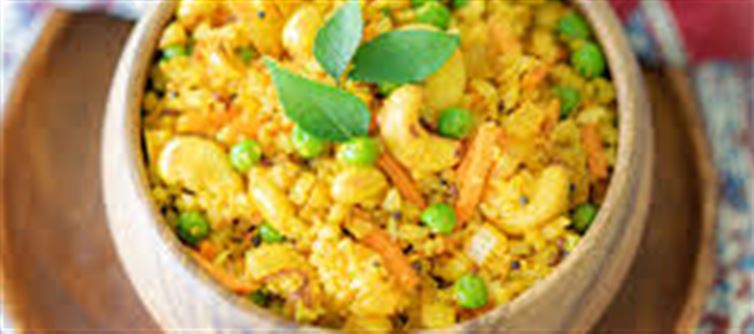
Cauliflower upma Recipe
Cauliflower upma is a healthy, low-carb twist on traditional upma, using grated cauliflower instead of semolina. It’s light, nutritious, and perfect for breakfast or a quick meal.
Ingredients:
1 medium cauliflower, grated or finely chopped (to resemble rice)
1 small onion, finely chopped
1–2 green chilies, finely chopped
1-inch piece ginger, grated
1/4 cup peas or mixed vegetables (optional)
2 tablespoons oil or ghee
1 teaspoon mustard seeds
1 teaspoon urad dal (optional)
1 teaspoon chana dal (optional)
8–10 curry leaves
Salt, to taste
1/4 teaspoon turmeric powder
1–2 tablespoons chopped fresh coriander leaves
1 tablespoon lemon juice (optional)
Instructions:
Prepare the Cauliflower:
Wash and grate the cauliflower using a box grater or food processor. Pat dry to remove excess moisture.
Temper the Spices:
Heat oil or ghee in a pan over medium heat.
Add mustard seeds and let them splutter. Add urad dal, chana dal, and curry leaves. Sauté for a minute until the dals turn golden.
Sauté Vegetables:
Add chopped onions, green chilies, and grated ginger. Sauté until onions are soft and translucent.
If using peas or other vegetables, add them now and cook for 2–3 minutes.
Cook Cauliflower:
Add grated cauliflower and turmeric powder. Mix well to combine with the vegetables and spices.
Cover and cook on low heat for 5–7 minutes, stirring occasionally, until the cauliflower is tender but not mushy.
Finish the Upma:
Add salt to taste and mix well.
Stir in chopped coriander leaves and lemon juice for extra flavor.
Serve:
Serve hot as a healthy breakfast or light meal. Can be paired with coconut chutney or plain yogurt.
Tips:
Avoid overcooking the cauliflower to retain a slightly “rice-like” texture.
You can add roasted cashews for a crunchy texture.
For extra flavor, sprinkle a little black pepper or red chili flakes.
Health Benefits:
Cauliflower is low in carbs and high in fiber, vitamins C and K, and antioxidants.
This upma is light, filling, and suitable for weight management and low-carb diets.
Adding vegetables increases vitamin content and adds natural sweetness and texture.
Disclaimer:
The views and opinions expressed in this article are those of the author and do not necessarily reflect the official policy or position of any agency, organization, employer, or company. All information provided is for general informational purposes only. While every effort has been made to ensure accuracy, we make no representations or warranties of any kind, express or implied, about the completeness, reliability, or suitability of the information contained herein. Readers are advised to verify facts and seek professional advice where necessary. Any reliance placed on such information is strictly at the reader’s own risk..jpg)




 click and follow Indiaherald WhatsApp channel
click and follow Indiaherald WhatsApp channel